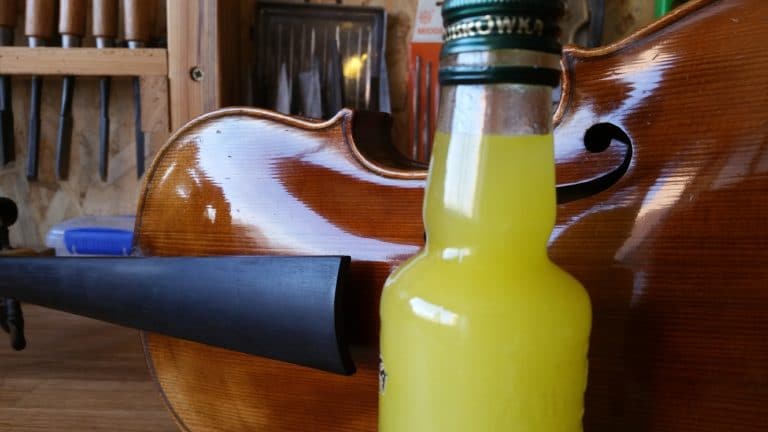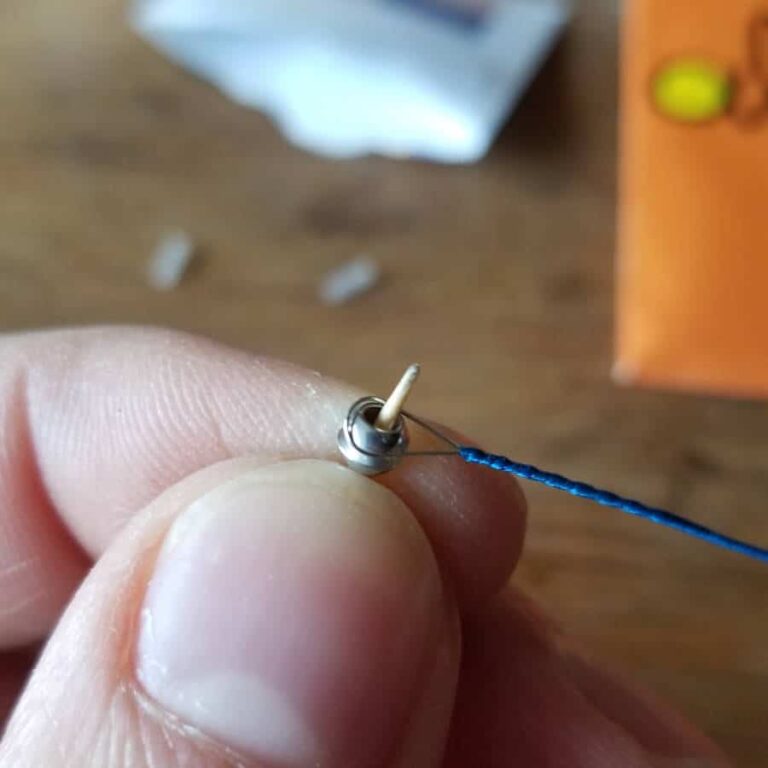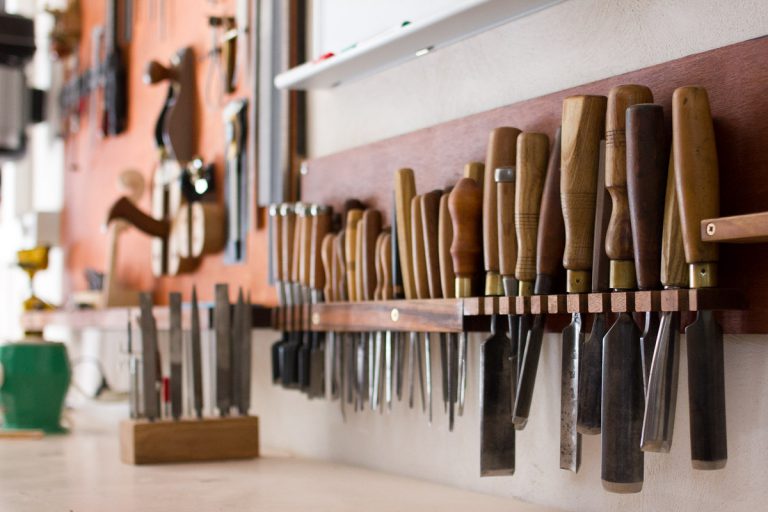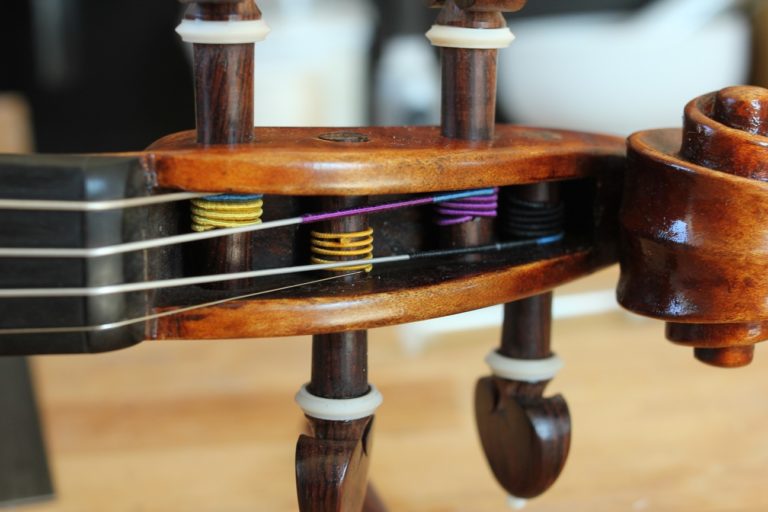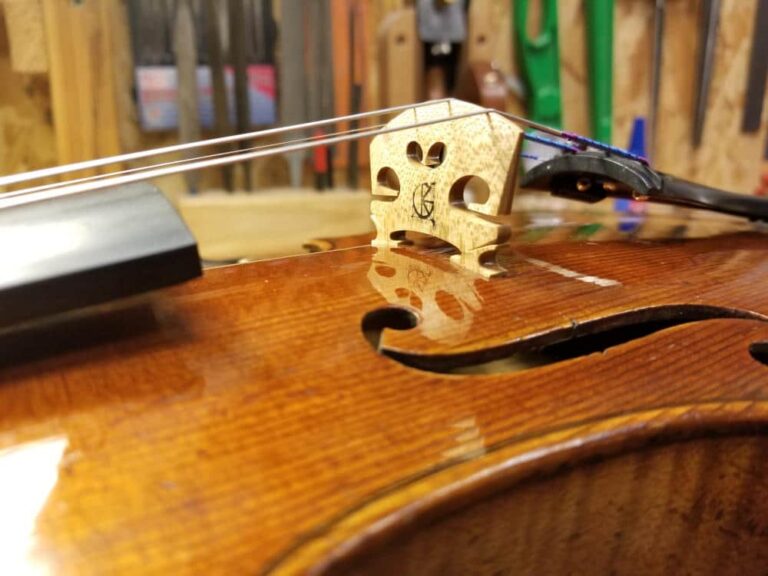Cette page est une traduction du texte en anglais « The sound of Venice » écrit par Milo Stamenkovic dans lequel il décrit ce qui fait, selon lui, la caractèristique du son des violons des maîtres italiens du 17e et 18e siècles. Il me paraissait important de transmettre cette théorie en la traduisant en français car elle est très intéressante et largement méconnue.
The origin of wood
It's not the shape, nor the varnish, and certainly not the finish that conceal the extraordinary sound capabilities of the instruments of Cremona's old masters. If they were to conceal any secrets, at least one of Cremona's many luthiers would have taken note. But we have no trace of them...
The materials used in the 17th, 18th and 19th centuries were very different in structure and biology to what we find today. It was maple(Acer Pseudo Platanus), but with a different structure. I doubt if the old masters ever saw flamed maple in its original white color. I'm deeply convinced that, by force of circumstance and sheer coincidence, they had no choice but to buy this different type of maple. Even the use of freshly cut spruce did not cross their minds, as there was an abundance of old-growth wood available in Italy at the time.
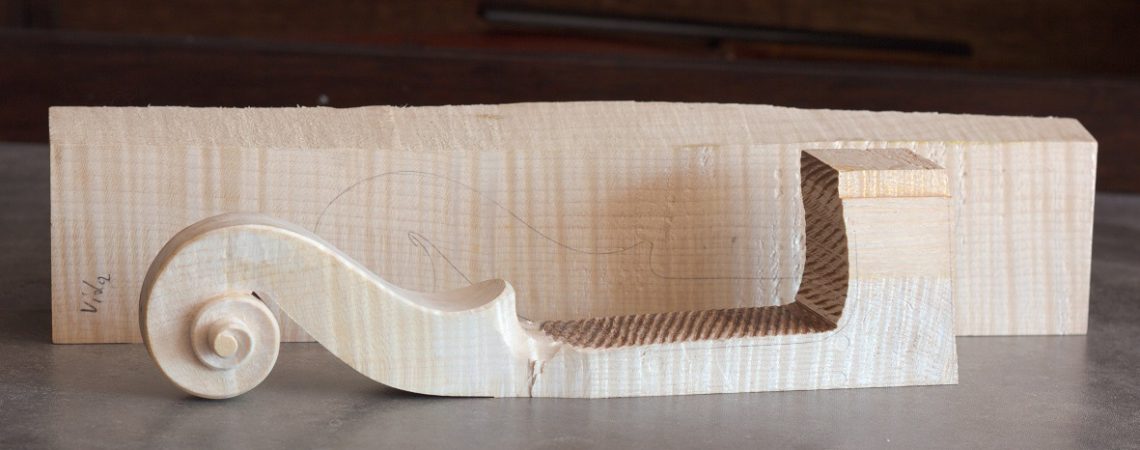
But first things first:
In those days, it was widely believed that the flame maple could only be found in ancient Turkey(now Bosnia). The Venetian Republic, constantly at war with Turkey, bought many goods from the independent city-republic of Dubrovnik, while the latter, besieged by Turkey, was forced to trade with it. It's not entirely untrue that Dubrovnik retained its independence only to enable Venice and Turkey to trade, despite numerous conflicts and disagreements. The goods traded were of low value: labor, weapons, but above all meat, leather and, of particular interest to us, wood.
Les enjeux de l’abattage des arbres n’étaient, contrairement à aujourd’hui, pris à la légère par les bûcherons turques : les arbres étaient généralement coupés au printemps juste avant d’être vendus à Dubrovnik. A cette période de l’année, le tronc avait déjà commencé à se remplir de sève, devenant « vivant » et accumulant des sucres, nutriments, mais aussi à développer tout une flore bactérienne.
These trunks were, generally speaking, quite large in diameter - by my estimate, no less than eighty centimetres, and often overa metre. It's not very difficult to determine this from the depth of the ring curves on closely examined instruments. Waves in those days, as today, could not be found beside roads. They also had to be found in remote mountainous regions. What's more, logs couldn't be cut with a chainsaw, transported on a truck by crane and then delivered to Dubrovnik by road. On the contrary, cuts were made using a hand saw, on sections of fifty centimetres to one metre in length, then split into halves, quarters, or eighths(depending on their weight and transport solutions, as the deformations of the waves in the wood made splitting quite difficult).
The journey took at least a month, and often much longer, interrupted by farm work, troop movements, bad weather, injuries, illnesses and, at best, laziness. Then it was off to Dubrovnik, on horseback if possible or, if not, on foot. There, just outside the city gates, hardened merchants awaited them, ready to haggle, offering them a modest fee. Once again, through carelessness, the wood was left exposed to the torrid Adriatic sun, still soaked with moisture, until the Venetians came to buy it.
Quite similar to today, isn't it? In fact, it's exactly the same!
The process of decomposition by bacteria of the sugars present in the wood began. The logs were stained and gradually changed color, so Dubrovnik merchants had to lower their prices. Venetians simply came to exchange goods or buy with their gold. The goods were then loaded into the ships and used as ballastto ensure stability. In these conditions of even greater heat and humidity, the wood had enough time to split until, after stopping at each port, even those of minor importance, it finally arrived in Venice.
The mysterious story of Venice wood
À Venise, ou, plus précisément dans « l’Arsenal » (le port commercial) il y avait, de notre point de vu, une scierie d’une taille assez incroyable. A la place de la zone de douane actuelle de Venise, à côté du lac Larghetto del Legname, le bois était stocké, scié et vendu à travers l’Europe entière. Pratiquement tous les meubles de l’ère classique étaient fabriqués à partir de bois vénitiens, de plus près de 40.000 personnes y travaillaient.
During hundreds of years of timber trading, the Venetians had a major problem: they couldn't prevent their huge stock of wood from splitting or staining under the onslaught of the summer sun. By chance, after being underwater for several years, the trunks that were used as pillars to support the city of Venice were lifted out of the water. Even today, this wood is quite mysterious - still compressible, crack-resistant, waterproof, impervious to worm attack. Thus began the marvellous story of Venetian wood, used to make ships, oars, furniture and more...
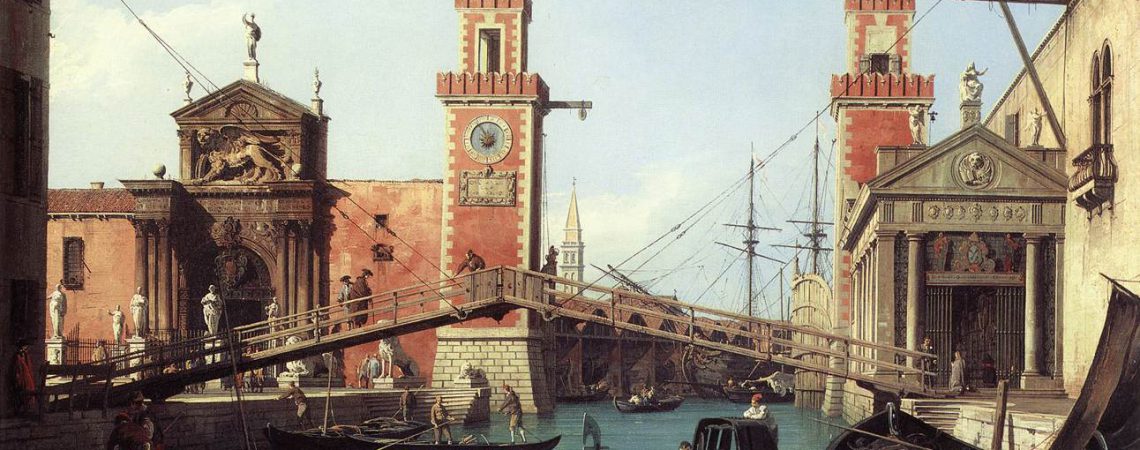
Later, the entire Venetian fleet was built from the submerged timbers - which is how the legend was born: the Venetian merchant and military navy was lighter, and therefore faster, than that of other warlike nations. Their ships were difficult to ignite or sink.
The Venetians were very proud of their fleet, much feared by their enemies. Naval authorities and shipbuilders specifically requested that even oars be fashioned from the lake's submerged timber. In time, the Venetian navy became the world's greatest maritime power, its ships unrivalled, while the city's pillars remained architectural mysteries.
The Venetians immersed their wood stocks in the nearby lake called Larghetto del Legname (Wood Lake), knowing that this was the only way to preserve it from drying out and cracking. Also, bacteria affected the color of the wood, and with enough patience, this change would completely cover the wood, giving it a new color - darker and more intense. It was this wood that was sold to luthiers.
In my opinion, the wood had to stay in the lake for at least two years. Sometimes, it could wait seven years for customers in Cremona. Various types of wood were soaked in the water: beech, oak, maple, ash and spruce - whatever could be bought on the long journey from Egypt to Venice.
Une fois dans l’eau, le bois était exposé à l’abondance de bactéries que l’on nomme généralement microaérophile (n.d.t : désigne la famille des bactéries pour laquelle l’oxygène est indispensable mais qui ne se développent que dans des milieux où la pression partielle d’oxygène est nettement inférieure à celle de l’air), qui se nourrissaient systématiquement des substances présentes dans le bois. Celles-ci étaient tellement actives que l’eau du lac était noire et d’une odeur aigre. Mais autant que cela puisse nous contrarier de nos jours, avec nos préoccupations sur la santé et l’environnement, les vénitiens de l’époque vivaient, imperturbables, au milieu de toutes sortes « d’odeurs ».
Finally, on a regular basis during the summer break, luthiers came to buy the wood, while the process continued to develop on the way back to Cremona. The decomposition of the sugars did not stop, as the town was located in a valley below sea level, with a rather damp, marshy climate.
Had Cremona been in a different location, or had the Stradivari and Amati lived elsewhere, I doubt we would have been able to enjoy such exceptional instruments.
My thoughts are corroborated by several facts:
- Older Cremonese instruments generally have less mass than more recent ones(as the nutrients in the wood are no longer present).
- Their wood won't let the light from an ordinary lamp shine through(due to the loss of nutrients, the wood has contracted and, like a folded curtain, no longer lets light through).
- The color of the wood of the old Cremonese masters is different from the German instruments of the same period(German luthiers came to Bosnia to get their wood from the land, which was worked much earlier and was in a much healthier and paler condition).
With the loss of substances, the wood was not only lighter and denser, but also much more flexible, and the softer back could breathe better with the membrane(table). So the timbre was fundamentally different from that of other violins. I'm convinced that Italian luthiers had no option but to buy what was available in their day, and the Venetians had to protect their wood from rot and the elements by submerging it, all to keep it in saleable condition.
We can also trace the journey from wood to finished instrument. While we may find many coincidences, flaws and oversights, we won't encounter anything esoteric.
There are no mysteries. That's why it's impossible for us to find and solve them.
A few words about manufacturing
I'd like to devote the next section to the process of making the instrument itself.
Again, I don't see any mystery in this, especially as the ancient Italians had a keen sense of aesthetics and, in keeping with the carpentry tradition handed down from generation to generation, loved every piece of wood they worked with. Wood has its own laws, which must be recognized and observed.
No piece of wood is straight in its inner split line; each one has an arched shape that the old masters used to create the curves of their instruments. It is the wood itself that decides which curves the top and back will take, and only if these are followed will maximum flexibility be achieved, allowing the instrument's timbre to reach its full potential.
Paradoxalement, les anciens maîtres dans la plupart des cas fabriquaient leurs instruments avec des bois que les luthiers « gâtés » d’aujourd’hui ne regarderaient même pas. Quand bien même, leurs instruments possédaient un meilleur son car leur coupe était toujours parfaite.
I only hope that this text will help luthiers to get away from dogma and mystery hunting and, in this century, use sound as a starting point. Sound is within our reach, in the materials. We just need to stop seeing lutherie from an obscure perspective. And, with a little patience, focus on sound as a crucial goal.
Violin making is, and must remain, an art. An inner feeling that must guide us in the creation of high-quality instruments, faster and more poetically than a pile of measuring devices. We mustn't give up, because soon the old Italian masters will disappear from the limelight. But we can catch up and even surpass them.
Source : The sound of Venice

